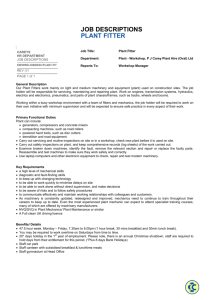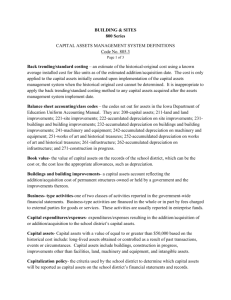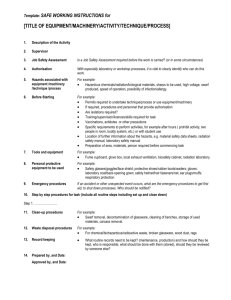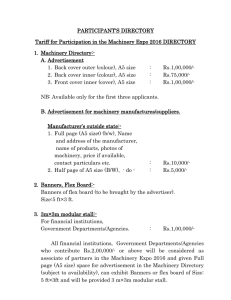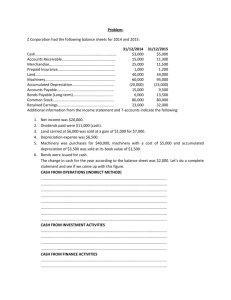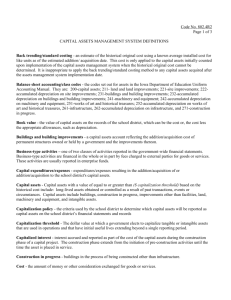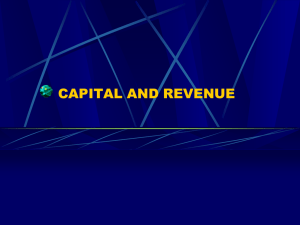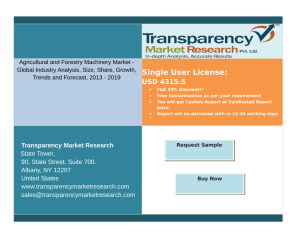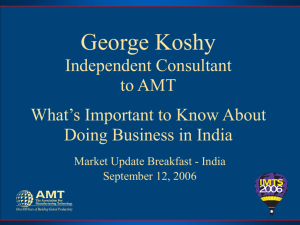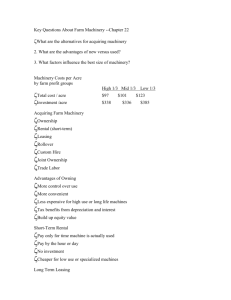Finance and Accounts for Logisticians
advertisement
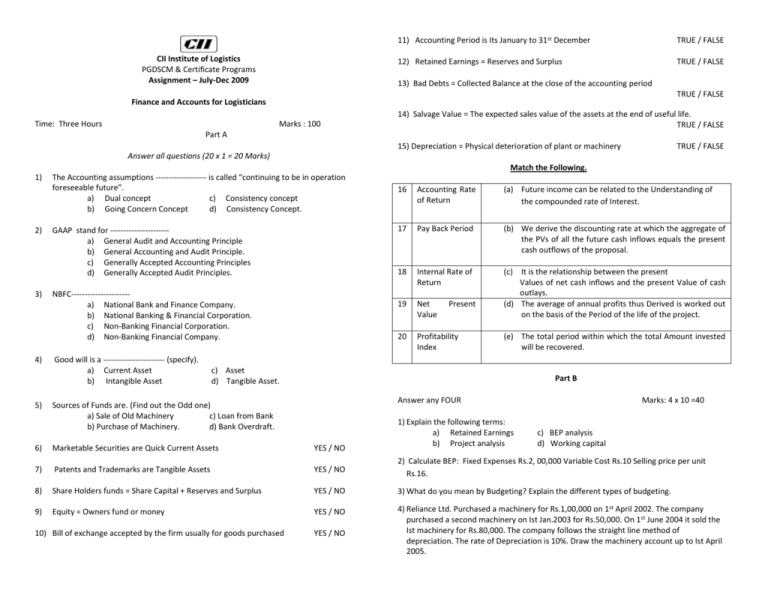
CII Institute of Logistics PGDSCM & Certificate Programs Assignment – July-Dec 2009 11) Accounting Period is Its January to 31st December TRUE / FALSE 12) Retained Earnings = Reserves and Surplus TRUE / FALSE 13) Bad Debts = Collected Balance at the close of the accounting period TRUE / FALSE Finance and Accounts for Logisticians Time: Three Hours Marks : 100 14) Salvage Value = The expected sales value of the assets at the end of useful life. TRUE / FALSE Part A 15) Depreciation = Physical deterioration of plant or machinery TRUE / FALSE Answer all questions (20 x 1 = 20 Marks) Match the Following. 1) 2) 3) 4) 5) The Accounting assumptions ------------------- is called “continuing to be in operation foreseeable future”. a) Dual concept c) Consistency concept b) Going Concern Concept d) Consistency Concept. GAAP stand for ---------------------a) General Audit and Accounting Principle b) General Accounting and Audit Principle. c) Generally Accepted Accounting Principles d) Generally Accepted Audit Principles. NBFC---------------------a) National Bank and Finance Company. b) National Banking & Financial Corporation. c) Non-Banking Financial Corporation. d) Non-Banking Financial Company. Good will is a ----------------------- (specify). a) Current Asset b) Intangible Asset 16 Accounting Rate of Return (a) Future income can be related to the Understanding of the compounded rate of Interest. 17 Pay Back Period (b) We derive the discounting rate at which the aggregate of the PVs of all the future cash inflows equals the present cash outflows of the proposal. 18 Internal Rate of Return 19 Net Value (c) It is the relationship between the present Values of net cash inflows and the present Value of cash outlays. (d) The average of annual profits thus Derived is worked out on the basis of the Period of the life of the project. 20 Profitability Index Present (e) The total period within which the total Amount invested will be recovered. c) Asset d) Tangible Asset. Part B Answer any FOUR Sources of Funds are. (Find out the Odd one) a) Sale of Old Machinery c) Loan from Bank b) Purchase of Machinery. d) Bank Overdraft. 1) Explain the following terms: a) Retained Earnings b) Project analysis Marks: 4 x 10 =40 c) BEP analysis d) Working capital 6) Marketable Securities are Quick Current Assets YES / NO 7) Patents and Trademarks are Tangible Assets YES / NO 2) Calculate BEP: Fixed Expenses Rs.2, 00,000 Variable Cost Rs.10 Selling price per unit Rs.16. 8) Share Holders funds = Share Capital + Reserves and Surplus YES / NO 3) What do you mean by Budgeting? Explain the different types of budgeting. 9) Equity = Owners fund or money YES / NO 4) Reliance Ltd. Purchased a machinery for Rs.1,00,000 on 1st April 2002. The company purchased a second machinery on Ist Jan.2003 for Rs.50,000. On 1st June 2004 it sold the Ist machinery for Rs.80,000. The company follows the straight line method of depreciation. The rate of Depreciation is 10%. Draw the machinery account up to Ist April 2005. 10) Bill of exchange accepted by the firm usually for goods purchased YES / NO 5) “Ratios are the tools which will help the management in taking decisions”- Discuss 6) What are the primary sources of funds? Explain in detail. Part C Case Study Answer all FOUR Marks: 4 x 10 =40 ABC Ltd., propose to purchase a machinery for Rs.1,00,000. There are two alternatives available in the market. The Finance Manager has to choose the best among the alternatives available. The cash inflow of the machineries is as follows; Year Machine –A Cash Inflow Machine-B Cash Inflow 1 20,000 60,000 2 30,000 50,000 3 40,000 40,000 4 50,000 30,000 5 60,000 20,000 The company’s expected rate of return is 10%. Present Value Table: Discounting factor at 10%. 1 2 3 4 5 0.909 0.826 0.751 0.683 0.621 Calculate the following for Machine A & B 1. 2. 3. 4. Pay Back Period Net Present Value Method Profitability Index Method Which machinery you will recommend? *****
